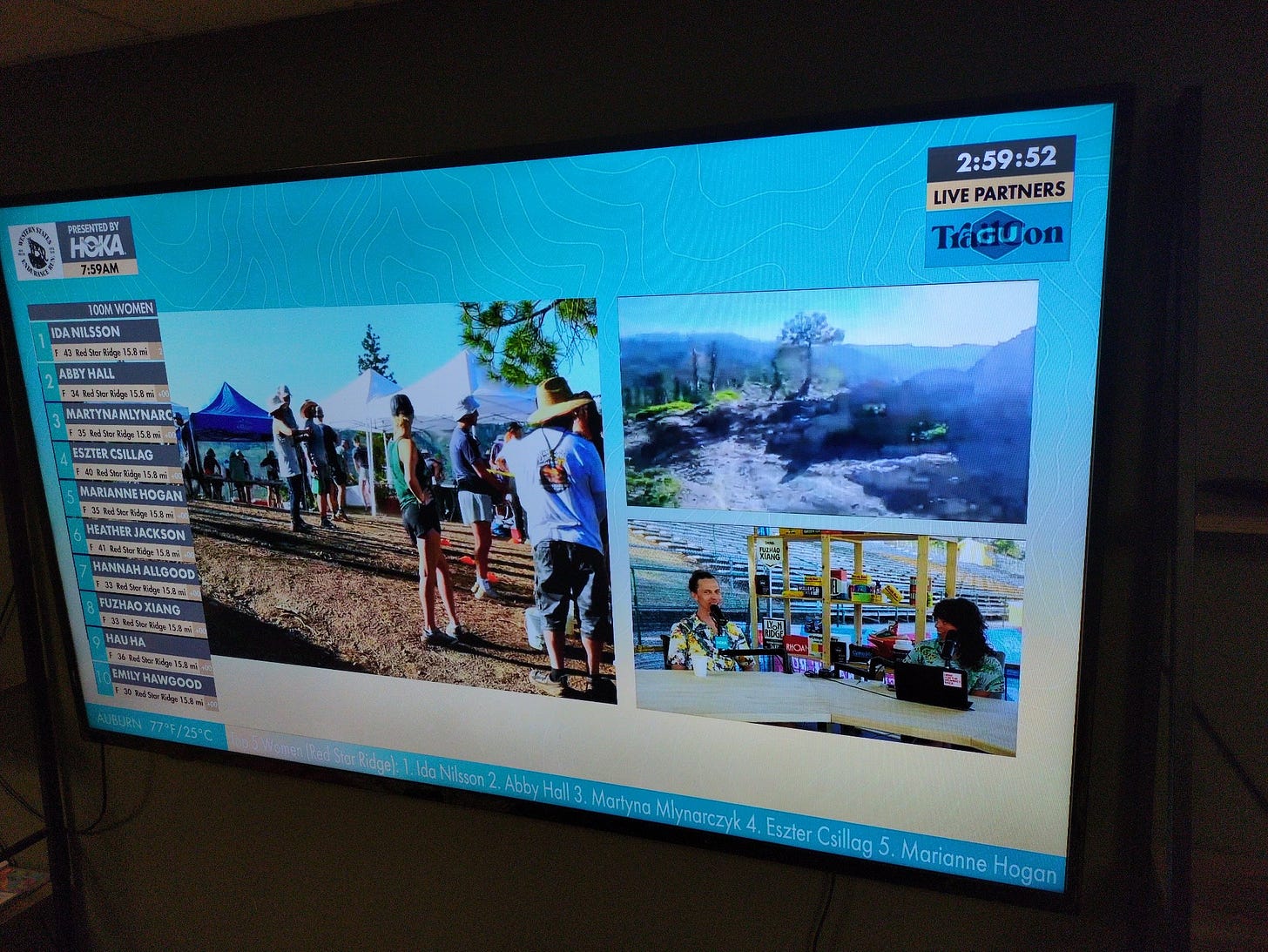The Vibe: Is The Western States Coverage The Future Of Sports?
There is a shift happening in how people consume sports, and it's forcing leagues to ask whether it's better to appeal to the masses or a smaller, engaged fan base. Western States may be the template.
In addition to my own trail running adventures last weekend, the Western States 100 was also happening out in California. I think of Western States as the Boston of the trail circuit. I'm not sure if it's the oldest race out there, but it certainly is the one that those in the sport aspire to and is the most popular.
As it's popularity has grown, so has access to the event in the form of a Livestream on YouTube that runs the entirety of the 30 hours the race is occurring. I turned in to see the start, and checked the stream as I went about my weekend. At the start, over 20,000 we're tuning in live, with the comments section bursting with shout-outs. Final numbers haven't been released but my bet is that as runners neared the finish the number of viewers continued to grow.
During the stream, I couldn’t help that WSER coverage has some how combined everything good about watching sports on TV, packaged it to an engaged audience, and showed the parts that everyone wanted to see. They've seemed to figure out a formula to make a 30-hour race entertaining to its biggest fans. The stream provided live analysis from anchors and pro runners not participating, who clearly are experts. Reports and cameras were staged at all of the aid stations along the course coupled with drone footage of the runners out on the rest of course allowed viewers to follow runners at each stage. Lastly, an open comments section allowed fans to interact. All for free, thanks to a sponsorship by Hoka and donations from the audience.
Western States is an interesting case study in how to successfully cater to a sports audience in 2025.
As certain sports have gone streamer-only or are only available with add-on fees, viewers have to pick and choose what they watch, when they watch, and what they pay for. I paused my YouTube TV subscription until football season. I haven’t watched more than a handful of NBA or MLB regular season games in years, mostly because I’m unwilling to fork over more money for Fan Duel network, on top of my already alarmingly high streaming bill.
With the exception of the NFL (and maybe big time college football), leagues are facing existential questions about how to appeal to the maximum amount of fans. How can they attract the most eyeballs when people aren’t consuming sports the same way?
Yet I can’t help but wonder if these leagues are thinking about this all wrong. I got the feeling watching Western States coverage that maybe a smaller (yet still large) audience that is more engaged is more important than broadcasting to the people with a passing interest. It’s easy to point out the downside of this strategy: less eyeballs means less money or ad revenues to keep a league afloat.
The upsides are a little more nuanced, yet still viable. With the bifurcation of the sports universe, fans have taken their time and invested heavily in the sports they do care about. Nerding out about your favorite sport is cool, and a phenomenon that was less common when everything was in one place. With that, fans want more detailed analysis from their coverage. In running, that means background on athlete’s training, gear, hydration strategy, etc. That analysis, paired with great story telling can lead to sustainable growth over time, keeping the die-hards while attracting new eyes.
Accessibility can’t be overlooked, which also makes the YouTube component of this interesting to watch. It is the most watched platform of the streamers by far and the number of hours people spend watching continues to grow. If they can find a way to bring sports to fans for free (or at a low cost), they just might tie Netflix in the streaming wars.




